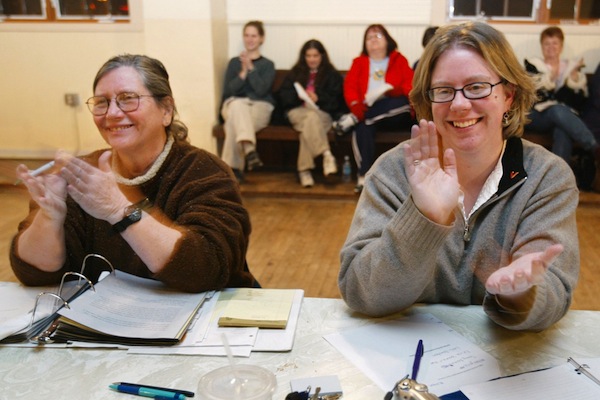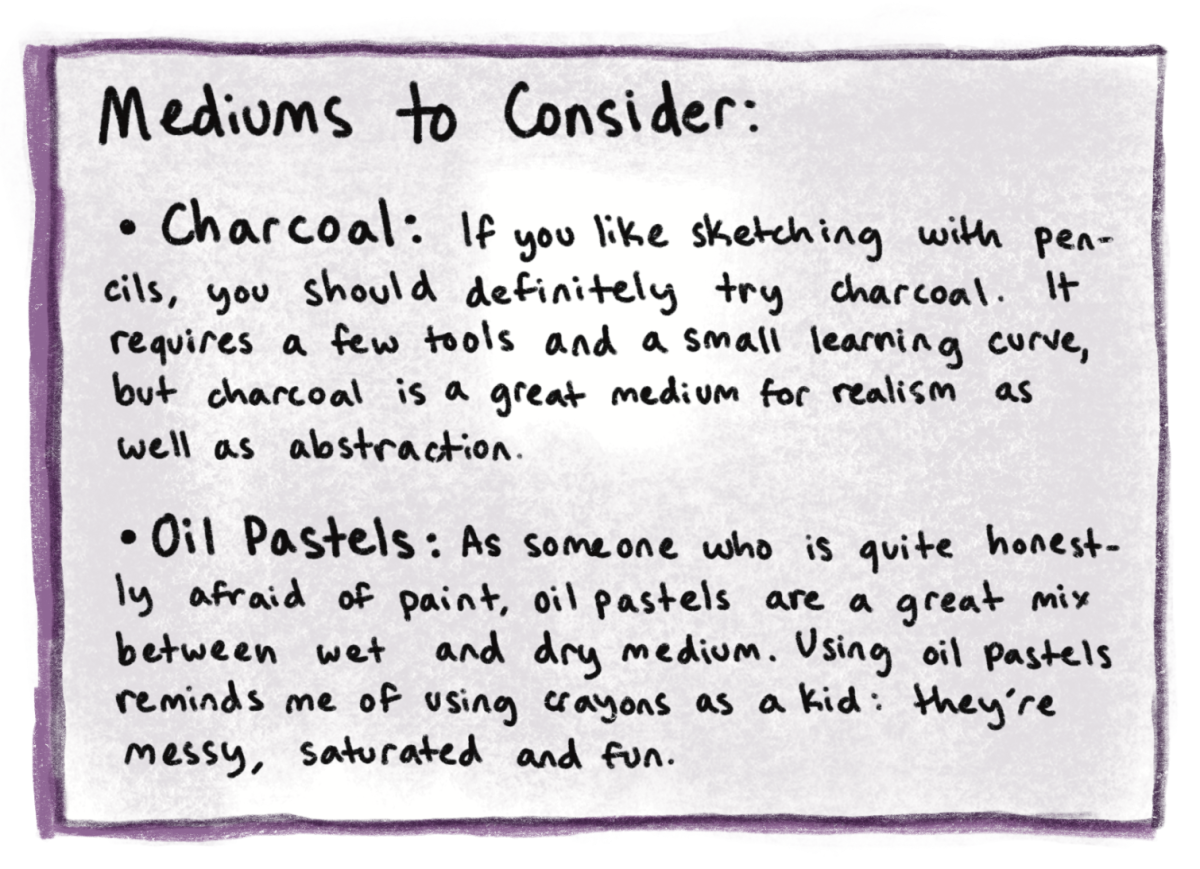DESPITE CRITICISM, PROTEST DEFENDS MODERN PRINCIPLES OF DEMOCRACY
It started, like many current phenomena, with a webpage. A post appeared on Adbusters Blog, July 13, with a banner across the top: “On Sept. 17, flood into lower Manhattan, set up tents, kitchens, peaceful barricades and occupy Wall Street.” Just like that, throngs of dissatisfied Americans poured into the fiscal capital of the United States, armed with cardboard signs and megaphones. September has come and gone, and dissatisfied Americans continue to occupy Wall Street and other streets across the country.
Like the Egyptian demonstrations that inspired it, the Occupy Wall Street movement aims to dismantle government corruption through a reassessment of financial values. Demonstrators unite under the slogan “We are the 99 percent,” a reference to the high percentage of people in the middle to lower classes losing economic opportunity to America’s wealthy elite. Too often, the interests of the majority are swept aside in favor of the one percent holding economic and political sway. According to Aaron Burnett, St. Louis organizer of the nonprofit Missouri Jobs with Justice, 50 percent of Americans make $22 thousand annually. That number may sound sufficient, until one takes into consideration the costs of providing for a family of four, in which case $22 thousand falls right on the federal poverty line. Thanks to social mobility, citizens don’t have to live like this forever, but ascending the class ladder takes education and resources, both of which cost money. It’s a paradox capitalism has overlooked, and people are starting to notice.
As one Wall Street protester’s sign declares: “I am a human being, not a commodity.” But the government has made it clear it isn’t interested in human beings: according to the Campaign Finance Institute, it took over one million dollars to seal a seat in the House in 2010, and over eight million for a seat in the Senate. In an institution built on the power of the people, this statistic reveals a disturbing trend toward power in the paper trail. What will become of democracy if this emphasis on money over the individual is allowed to continue?
Justice begins when government ceases to run on corporate greed. In rallying together in cohesive solidarity, these views can no longer be ignored. In fact, attention from the media has escalated the Occupy Wall Street movement from a traffic nuisance to a national event. Police aggression, snide remarks from political commentators and news coverage all attract attention to the persistence and courage of protesters, further highlighting the intensity of their cause. The media spotlight has now become a victory in itself.
But neither solidarity nor attention alone will end financial corruption, as Occupy Wall Street’s critics point out. That’s why the original Adbusters post includes the line: “We demand that Barack Obama ordain a Presidential Commission tasked with ending the influence money has over our representatives in Washington.” The groups represented at Occupy events from state to state may only relate to each other loosely, but that detail does not matter compared to the end result: a definitive goal and an ideology that extends beyond any demographic pigeonhole people are too often forced into. This is a movement of the collective 99 percent. It’s about unity, not splintered politics. How ironic that the Tea Party frowns at Occupy Wall Street protesters when they are playing out the same kind of radical rebellion that our country’s founders enacted in Boston Harbor.
American democracy can only work as a product of its people. We have always known that, from the birth of our nation to the Civil Rights movement, from the Vietnam War to Iraq. Occupy Wall Street carries on that legacy, proving yet again that in politics, we achieve so much more when we come together.
The American people are agents of change by blood. It’s time we showed that to our government.
ECONOMIC PROTESTORS NEED TO ORGANIZE AND STANDARDIZE THEIR DEMANDS IN ORDER TO BE EFFECTIVE
Movements such as Occupy Wall Street, based in Zucotti Park, New York City, serve to spark major changes in society, politics, and the economy. This protest targets all three aspects of the country’s infrastructure and uses abundant media coverage to draw others in. According to the Wall Street Journal, as of October 15 over five thousand protesters picketed in New York alone. Despite their numbers, however, this group cannot achieve the economic reform it desires if it continues with its current disorganized methods.
Occupy Wall Street protestors may believe they’re making a difference, but their unclear, anarchic ideas confuse and distract from any message they try to send. The main issue with this group lies in its inability to determine exactly what it supports and opposes. Interviewed participants throw out repetitive, vague answers, claiming to oppose “corporate greed,” socioeconomic inequality, and capitalism. OWS picketers defend their vague answers with the same response, claiming that their movement is “amorphous,” meaning that it has no clear shape or defined form. While this surely fills the protestors’ English teachers with pride, it means the movement has no cause, so it cannot actually change anything.
Dealing with an ambiguous issue is not a viable excuse for a lack of clear opposition to something that protestors want to reform. It doesn’t matter if a protest is spontaneous or clearly organized, successful movements target precise aspects of society that can be altered with the passing of a law or new precedent. The government cannot pass a law illegalizing “corporate greed” but it can change how Wall Street handles money.
Once a movement figures out what it opposes, it can’t just halt all thinking processes and start drawing attention. A group with signs and a list of grievances cannot make a difference. Any revolution need an agenda, something for which to aim. Occupy Wall Street has no clear goals of any kind, except to extinguish capitalism. Once again, this response appears sufficient, but lacks a true core. It doesn’t clarify how protestors plan to remove the country’s entire economic system, or what should happen next to rebuild it.
The original Zucotti Park protesters use the extensive media coverage they receive for two reasons: to draw more people to their cause and inform the public of their ideas. This might actually benefit society as a whole if the protesters knew a thing or two about what to do with their newfound attention. They’ve got people’s attention, but each time they attempt to utilize the media’s interest, they fumble the ball. The participants come across as uneducated as they repeat the same tired phrases: that they are against many issues related to our economy and society, and that they are the 99 percent who believe the wealthy control America. All the protesters appear to have in common is dissatisfaction with capitalism, and the agreement that they have no specific goals. They repeatedly advertise the fact that they have no organization, which, rather than drawing people in, repels them. Nobody wants to back something if they don’t know what it stands for.
Those who believe Occupy Wall Street currently is on its way to making a significant change should recall historical non-violent movements. Student protests in the 1960s against the war in Vietnam could serve as a template for the protests in Zucotti Park happening today. The movement consisted of protesters from all over the country united by a clear motive; ending a war they thought was immoral. They didn’t use media attention to remind everyone that they were made up of separate groups across the country with dissimilar goals; rather, they continuously spread a unified message to achieve their goal. Their activism made sense, while Occupy Wall Street has many Americans puzzled.
To make matters worse, the American Nazi Party issued an official endorsement of Occupy Wall Street October 17. When a group with such infamous roots teams up with a movement that will supposedly improve our economy, government, and society, one must wonder about the quality of this movement, and if it will truly lead the country in a direction we want to go. #










